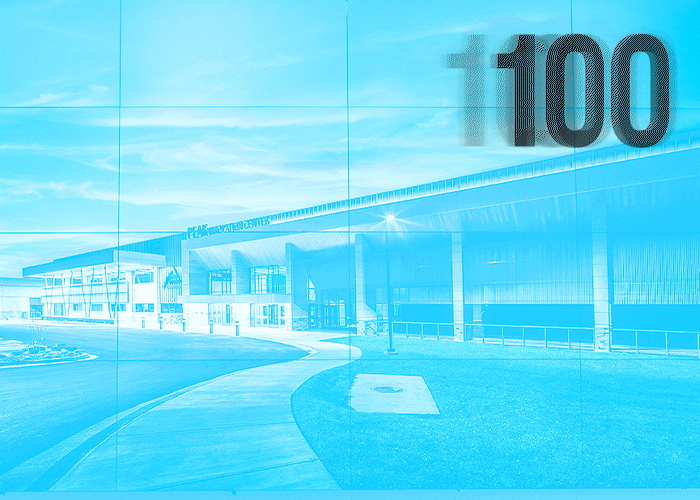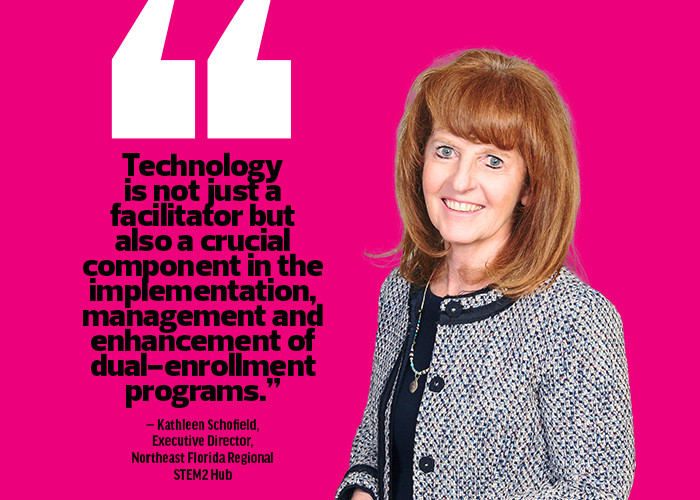At FSPS, Udouj says the need for programs like these became clear after the local chamber of commerce commissioned a study looking at the workforce needs in the area. It highlighted four areas of highest need: advanced manufacturing, health sciences, IT and skilled trades, and construction technology.
“We had an aging workforce in those areas. The average machinist was 55 years old!” Udouj explains. “So, there was a real need for the school district and the community to pull together and build a pipeline to get students interested in these careers.”
DISCOVER: Dual-credit students get hands-on manufacturing experience.
Dual-Enrolled Students Save Time and Money
Through dual enrollment, students may travel to a college campus or study at their high school with college-accredited faculty. Either way, they earn college credits — typically, for free — while completing their high school work.
“They’re able to kill two birds with one stone, and it saves their families money,” says Julie Soberanis, director of guidance, counseling, and college and career readiness at Irving (Texas) Independent School District. With almost 100 dual-credit courses and a range of industry certifications available, she says, “in the 2023 school year, we saved our families about $700,000 in tuition.”
In fall 2022, Fort Smith Public Schools opened the doors of the Peak Innovation Center, a stand-alone building that supports about 400 dual-enrolled students. A collaborative program of the district and the University of Arkansas – Fort Smith, the center offers a variety of courses in advanced manufacturing, health sciences and IT.
Through a strong relationship with UAFS, “we were able to make the Peak Innovation Center available to over 22 school districts in our region, rather than focusing only on Fort Smith Public School students,” Udouj says. “We’ve become a regional hub for career and technical education.”
Unlike traditional CTE courses, Udouj says, “at Peak, students come for half a day rather than just one period, so we’re able to take a deeper dive into the subject matter.”
In Irving ISD, which works in partnership with Dallas College to offer 80 dual-credit courses, Soberanis says the focus is on knocking out the prerequisites — such as English, history, math and science — that students will need when they start college. Students who move at a brisk pace can even earn an associate degree or industry certifications before they graduate from high school.













